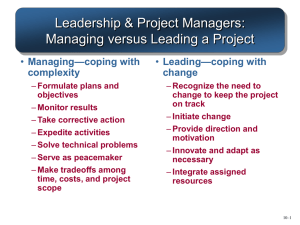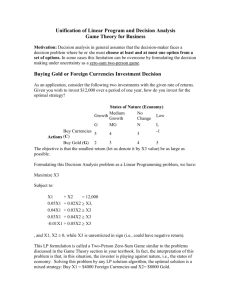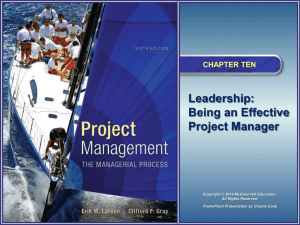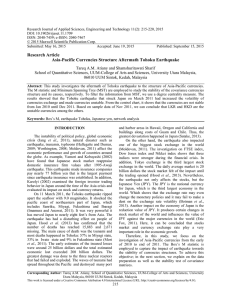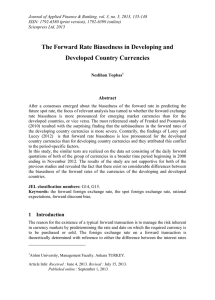Project Manager
advertisement
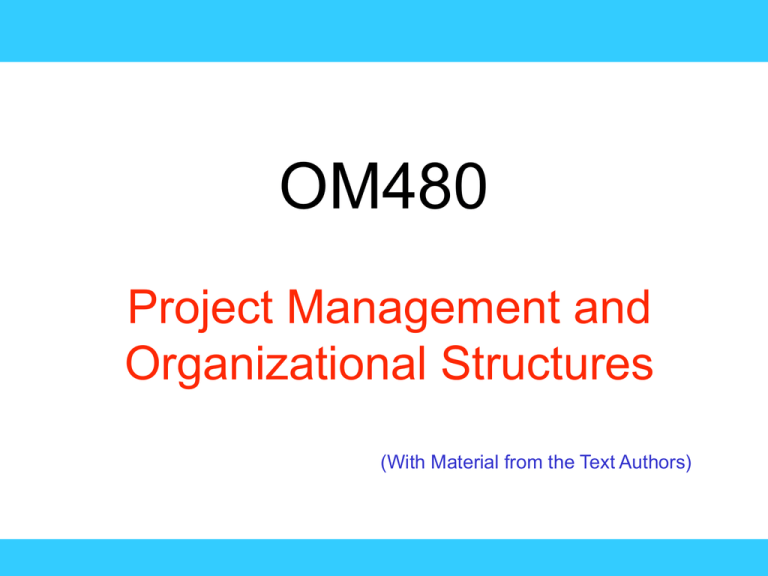
OM480 Project Management and Organizational Structures (With Material from the Text Authors) Overview • Organizational Project Management • Picking the “Best” Structure Functional Organizations Delta Manufacturing, Inc. President Project coordination Human resources Marketing Engineering Electronics engineering Customer service Finance and administration Domestic sales Software engineering Mechanical engineering International sales Manufacturing Design Fabrication Assembly Procurement Purchasing Receiving & inspection Testing Production scheduling Dedicated Project Team Zeus Electronics, Inc. President Human resources Marketing Engineering Finance and administration Manufacturing Procurement Project manager Project team Project Organization Structure Central Engineering Systems, Inc. President Other projects Marketing Human resources Finance and administration Legal Alpha Project Project Manager Engineering Electrical Mechanical Software Manufacturing Fabrication Assembly Test Other projects Beta Project Project Manager Procurement Engineering Systems Hardware Software Manufacturing Assembly Test Subcontractors Subcontractor X Subcontractor Y Subcontractor Z Procurement Matrix Organization Structure Zeus Electronics, Inc. President Human resources Director of projects Project administration Design engineering Finance Manufacturing Engineering Electronics engineering Project A project manager 1 2 1 Project B project manager 1 3 1 Project C project manager 1/2 1 Software engineering 1 Mechanical engineering Technical documentation Assembly Testing Marketing Quality 2 1 2 1/2 1 1 1 1 1 1 Customer service Domestic sales International sales 1 2 1 1/2 2 2 Projects and Organizational Change • Economic Conditions – Globalization – Information Flows • Technology Landscape – Growth – Obsolescence • Competition – See Above • Interdependent Systems – Moving “Bottlenecks” The New PM Realities • Shorter Timelines – Years to Months • Organizational Uncertainty – “Turf battles” • Employee Attrition – Downsizing, Mergers, Acquisitions – “Free Agency” • FUD • Cost Containment Efforts Division of Project Manager and Functional Manager Responsibilities in a Matrix Structure Project manager Negotiated issues Functional manager What has to be done? Who will do the task? How will it be done? When should the task be done? Where will the task be done? How much money is available to do the task? Why will the task be done? How will the project involvement impact normal functional activities? How well has the total project been done? Is the task satisfactorily completed? How well has the functional input been integrated? Key Dimensions Defining an Organization’s Culture Job Individual Task Independent Loose Low Performance Low Means 1. Member identity Organization 2. Team emphasis Group 3. Management focus People 4. Unit integration Interdependent 5. Control Tight 6. Risk tolerance High 7. Reward criteria Other 8. Conflict tolerance High 9. Means-ends orientation Ends Internal 10. Open-system focus External Cultural Dimensions of an Organization Supportive of Project Management Job Individual Task Independent Loose Low Performance Low Means Internal 1. Member identity 2. Team emphasis 3. People focus 4. Unit integration 5. Control 6. Risk tolerance 7. Reward criteria 8. Conflict tolerance 9. Means-ends orientation 10. Open-system focus Organization Group People Interdependent Tight High Other High Ends External Network of Relationships Other organizations Top management Project sponsors Customers Project managers Government agencies Project manager Functional managers Contractors Administrative support Commonly Traded Organizational Currencies Task-related currencies Resources Assistance Cooperation Information Lending or giving money, budget increases, personnel, etc. Helping with existing projects or undertaking unwanted tasks. Giving task support, providing quicker response time, or aiding implementation. Providing organizational as well as technical knowledge. Position-related currencies Advancement Recognition Visibility Network/contacts Giving a task or assignment that can result in promotion. Acknowledging effort, accomplishments, or abilities. Providing a chance to be known by higher-ups or significant others in the organization. Providing opportunities for linking with others. Source: Adapted from A. R. Cohen, and David L. Bradford, Influence without Authority New York: John Wiley and sons, 1990). Reprinted by permission of John Wiley & Sons, Inc. Commonly Traded Organizational Currencies Inspiration-related currencies Vision Being involved in a task that has larger significance for the unit, organization, customer, or society. Having a chance to do important things really well. Doing what is “right” by a higher standard than efficiency. Excellence Ethical correctness Relationship-related currencies Acceptance Personal support Understanding Providing closeness and friendship. Giving personal and emotional backing. Listening to others’ concerns and issues. Personal-related currencies Challenge/learning Ownership/involvement Gratitude Sharing tasks that increase skills and abilities. Letting others have ownership and influence. Expressing appreciation. Source: Adapted from A. R. Cohen, and David L. Bradford, Influence without Authority New York: John Wiley and sons, 1990). Reprinted by permission of John Wiley & Sons, Inc. Projects and Organizational Effectiveness
